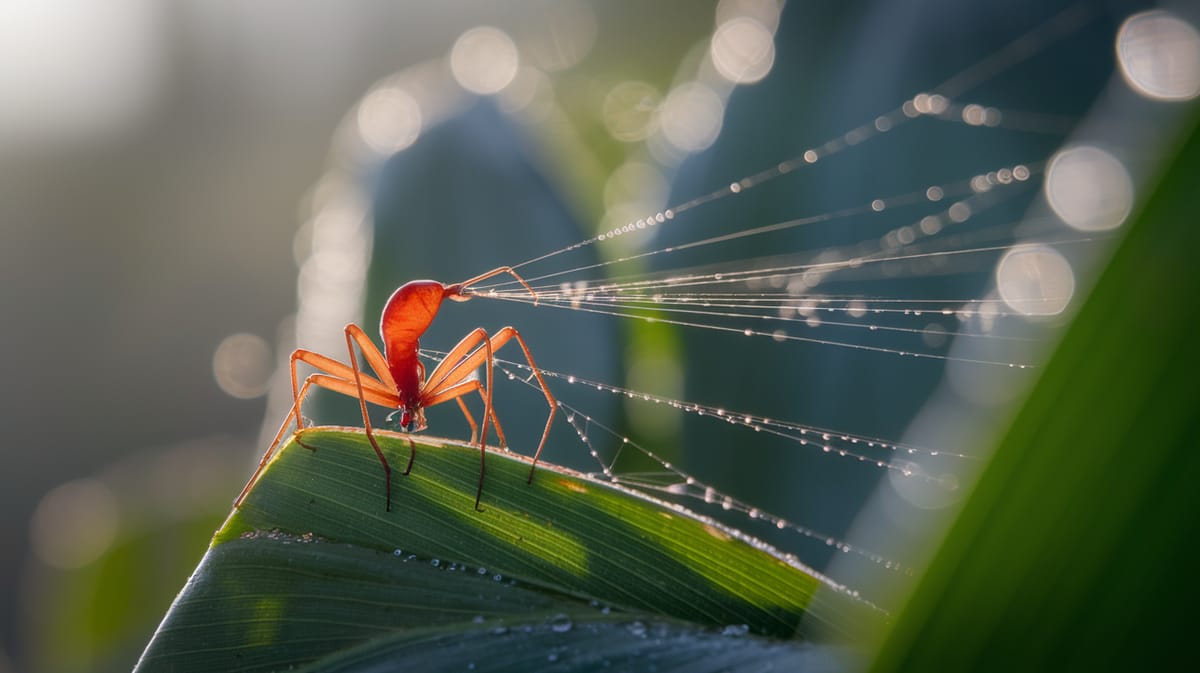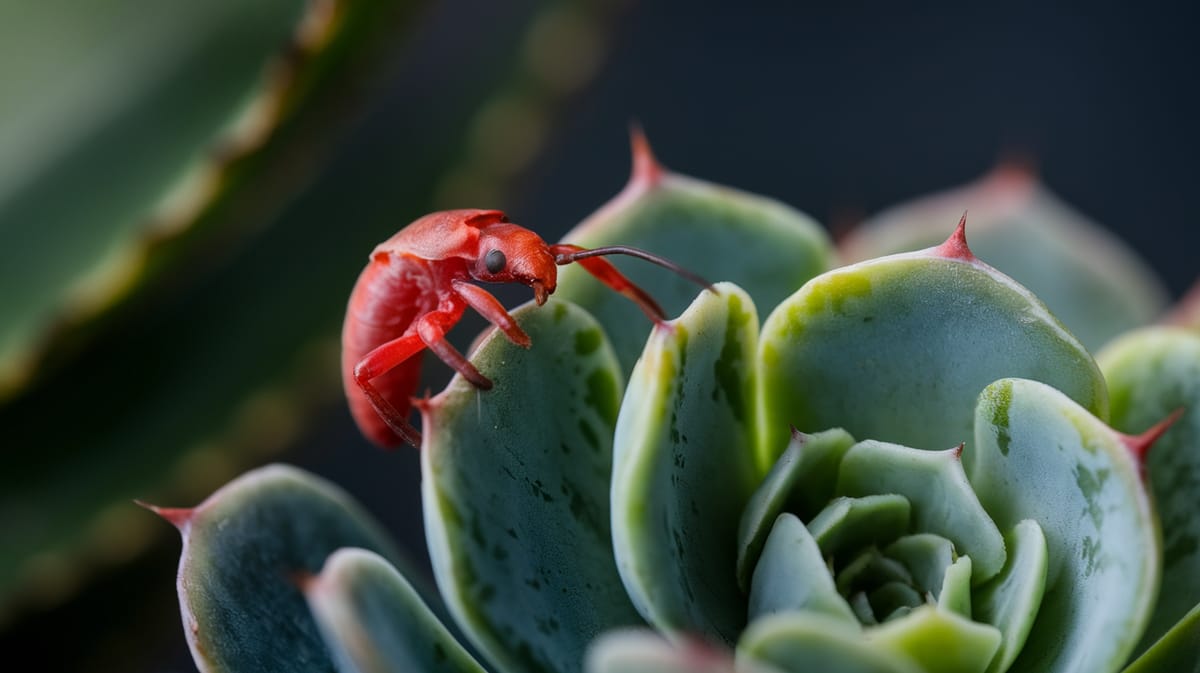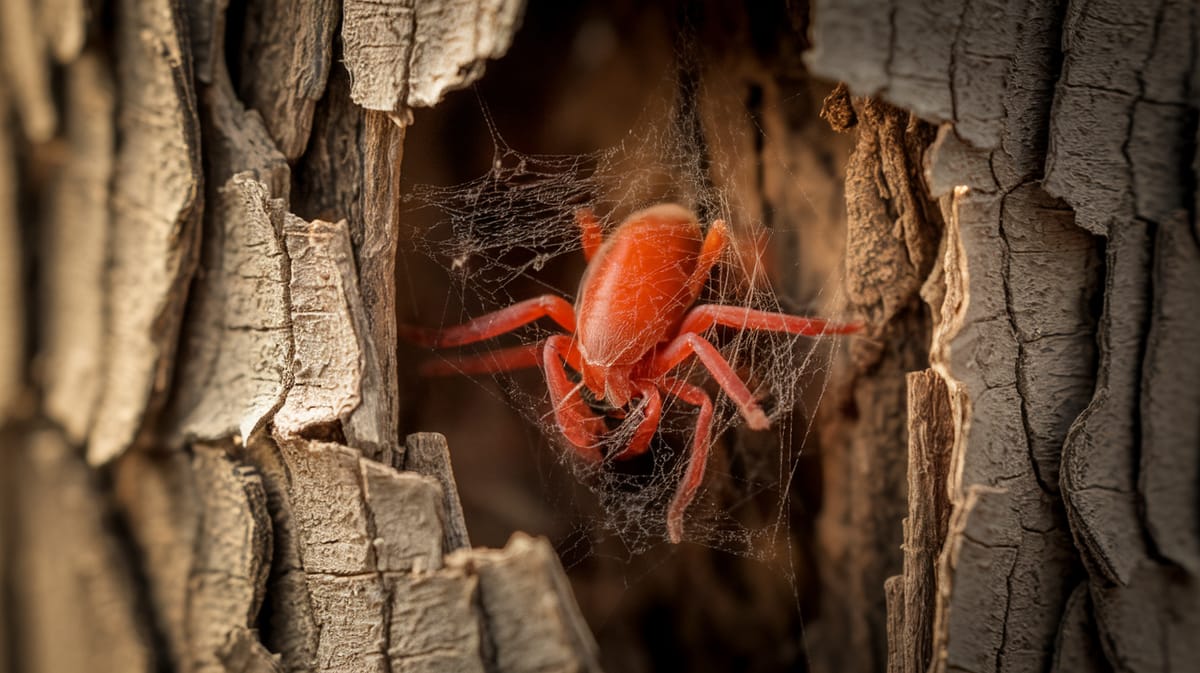Red Spider Mite
Tiny yet tenacious, the Red Spider Mite thrives in warm climates, often causing significant damage to plants by feeding on their sap. These minuscule pests are known for their rapid reproduction and adaptability.

Key Insights at a Glance
Did You Know?
Taxonomy & Classification
Red spider mites exhibit complex behaviors and rapid reproduction, making them formidable plant pests with a significant impact on agriculture. Let's understand the evolutionary journey and classification of these remarkable parasites, herbivores.
Global Distribution
Red spider mites are found on every continent, thriving in diverse environments from temperate to tropical regions.
Adaptation Resilience
Originating over 100 million years ago, these mites have evolved to survive environmental changes and resist various control methods.
Lifecycle and Growth
A remarkable journey of transformation from Egg to Adult.
Egg
Tiny, spherical eggs are laid on leaf surfaces, beginning the life cycle with a protective layer that aids in survival.
Larva
Newly hatched larvae have six legs and feed on plant cells, marking the start of their growth journey.
Nymph
Nymphs molt several times, gaining eight legs and increasing their feeding rate, vital for rapid development.
Adult
Adults are fully developed with eight legs, engaging in reproduction and continuing to feed voraciously on plants.
Dietary Habits
Feeding primarily on plant sap, this tiny pest adapts to various host plants using specialized mouthparts to extract nutrients.
| DIET TYPE | DESCRIPTION |
|---|---|
| Primary Diet | Primarily consumes sap from leaves of plants like tomatoes, beans, and cucumbers, causing visible damage. |
| Secondary Diet | Occasionally feeds on the sap of fruit trees and ornamental plants, adapting to available vegetation. |
| Occasional | Rarely resorts to fungal spores or pollen, using these as alternative food sources when plant hosts are scarce. |

Behaviour and Adaptations
Discover the fascinating adaptations that enable the Red Spider Mite to thrive in various environments.
Silk Spinning
Spins silk to create protective webs against predators and harsh conditions.
Rapid Reproduction
Produces large number of offspring quickly, ensuring population survival.
Leaf Damage Adaptation
Feeds on a wide range of plants, causing characteristic leaf damage.
Ecosystem Impact
Understanding the ecological role of Red Spider Mites in maintaining environmental balance.
Plant Decomposer
Breaks down plant matter, aiding nutrient cycling in ecosystems.
Prey for Predators
Serves as a food source for spiders and predatory insects.
Indicator Species
Signals changes in environmental conditions through population shifts.
Conservation Challenges
Addressing the major threats to Red Spider Mite populations.
Chemical Exposure
Pesticides disrupt mite ecology and survival rates.
Habitat Loss
Agricultural expansion reduces mite-friendly habitats.
Climate Change
Altered weather patterns affect mite distribution and reproduction.
Frequently Asked Questions
How long do Red Spider Mite live?
Red Spider Mites typically live for about two to four weeks, depending on environmental conditions like temperature and humidity. Their lifecycle includes the egg, larva, nymph, and adult stages, with favorable conditions accelerating their development.
What do Red Spider Mite eat?
Red Spider Mites feed on plant sap. They pierce plant cells with their mouthparts and suck out the contents, which can lead to leaf discoloration, wilting, and reduced plant vigor. They prefer hot, dry conditions and are common on houseplants, garden plants, and crops.
Are Red Spider Mite poisonous?
Red Spider Mites are not poisonous to humans or pets. They are primarily a nuisance to plants, causing damage by feeding on their sap. Infestations can lead to significant agricultural and horticultural losses if not controlled.
Are Red Spider Mite endangered?
Red Spider Mites are not endangered. They are widespread and considered pests in many parts of the world, due to their ability to rapidly reproduce and their impact on crops and ornamental plants.
What do Red Spider Mite symbolize?
Red Spider Mites do not have a widely recognized symbolic meaning. They are primarily viewed as pests in agricultural and horticultural contexts, rather than carrying any cultural or symbolic significance.
Do Red Spider Mite bite?
Red Spider Mites do not bite humans or animals. They feed exclusively on plant material, using their mouthparts to pierce plant cells and suck out the contents. Their primary impact is on plant health and productivity.
What color are Red Spider Mite?
Red Spider Mites are typically reddish-brown or orange-red, although their color can vary slightly depending on their age and environmental conditions. Their small size and color make them difficult to spot on plants until damage is visible.
Does a Red Spider Mite have wings?
Red Spider Mites do not have wings. They are arachnids, more closely related to spiders and ticks than to insects. They move by crawling and can be spread by wind, animals, or human activity.
What does a Red Spider Mite look like?
Red Spider Mites are tiny, about 0.5 mm in size, with eight legs and a reddish-brown or orange-red coloration. Under magnification, they may appear as small moving dots on the underside of leaves, often in groups.
Is a Red Spider Mite an insect?
Red Spider Mites are not insects; they are arachnids. Unlike insects, which have six legs, arachnids have eight legs. They belong to the Acari order, which includes mites and ticks, and are more closely related to spiders.
Related Insects
Discover insects with similar characteristics to Red Spider Mite - including shared habitats, diets, and taxonomic classifications
Share this profile
Help others discover Red Spider Mite
